Perishable goods are products characterized by a short shelf life and a rapid rate of deterioration if not managed under appropriate environmental conditions. At OCS, we understand the importance of maintaining the quality and safety of your perishable shipments. With our extensive experience, we ensure that your goods are handled with the utmost care throughout their entire journey.
What are perishable goods?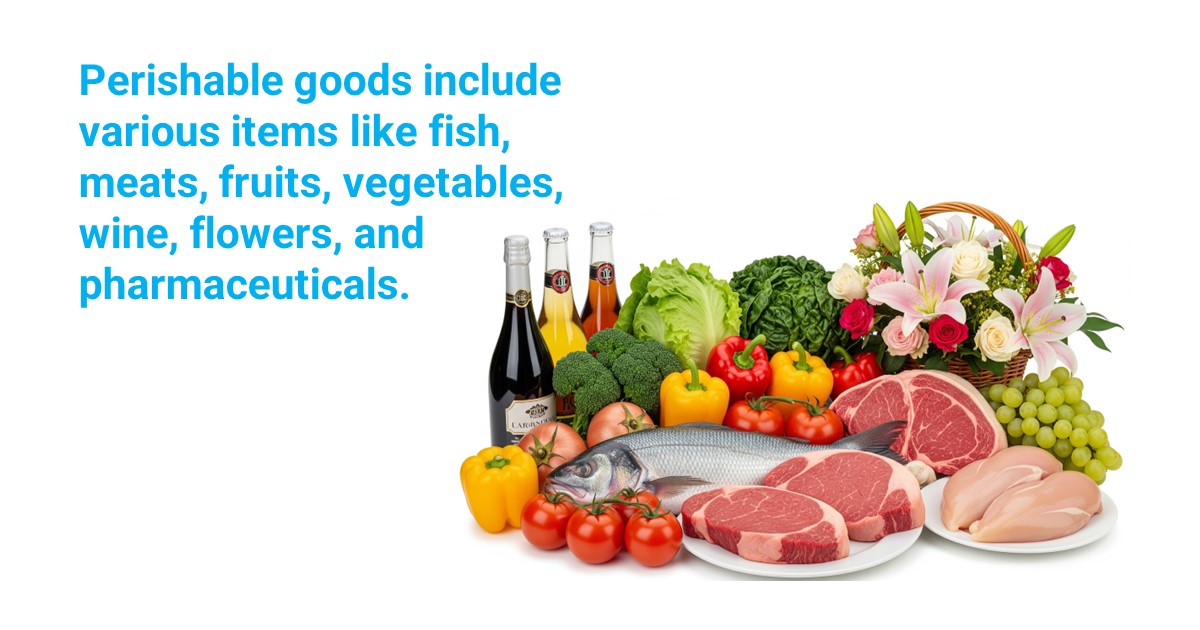
Perishable goods include various items like food products (fish, meats, fruits, vegetables, wine) and non-food items (flowers, pharmaceuticals) that spoil or lose efficacy without proper storage and transport. Their sensitivity to temperature, humidity, and light makes international shipping challenging. Perishable goods require specific conditions to maintain quality, freshness, and safety, especially during longer international transit with fluctuating environments.
Essential Requirements for Shipping Perishables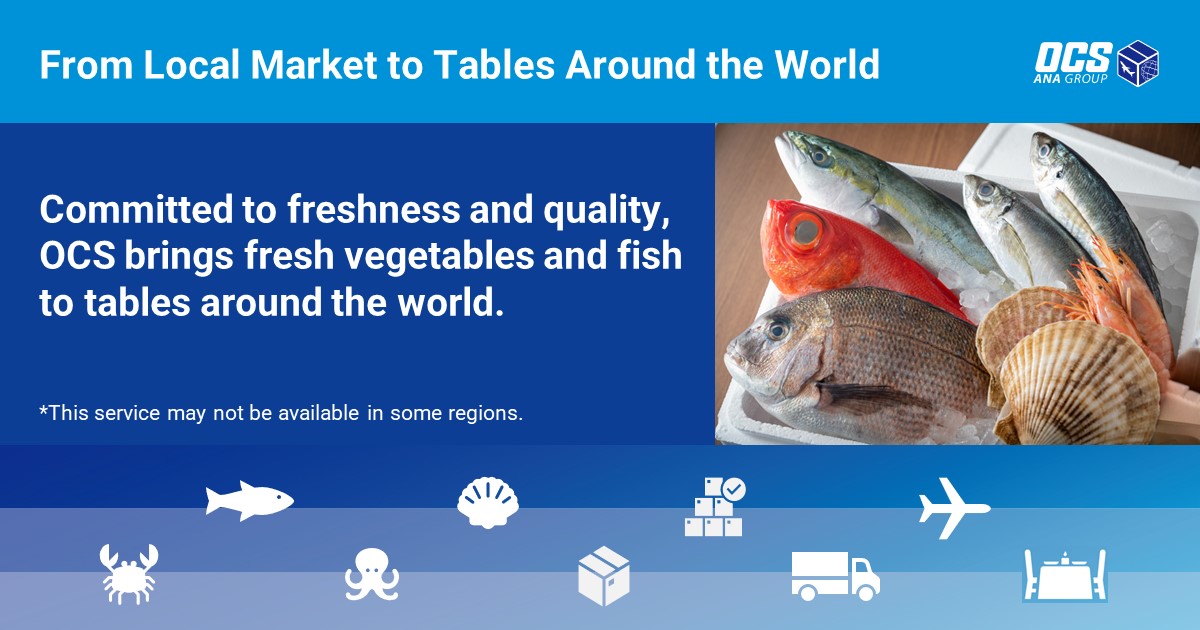
- Packaging: Robust packaging materials are important to withstand the rigors of long distance transportation. Insulated materials, such as polystyrene foam boxes, are commonly employed for their excellent thermal insulation properties. These are typically used in conjunction with coolants like ice packs, gel packs, or dry ice to maintain the required internal temperature and prevent spoilage. Furthermore, packaging must be strong enough to protect goods from physical damage during transit, including handling at various transfer points.
- Temperature Control: Maintaining a consistent temperature is one of the most important factors in preventing product degradation. Most perishable goods require a specific temperature range either refrigerated or frozen to preserve their quality. This necessitates the implementation of temperature controlled transportation, commonly known as cold chain logistics. A robust cold chain ensures that goods are kept at the required temperature from the moment of pickup until delivery, irrespective of external environmental conditions.
- Speed: Given the time-sensitive nature of these items, the longer they remain in transit, the greater the risk of spoilage. Therefore, selecting expedited shipping options and optimizing transportation logistics for the shortest possible transit time is critical. This may involve coordinating with multiple carriers and strategically planning the most efficient routes to minimize delays.
- Compliance: Shipping perishable goods across international borders involves navigating strict import and export regulations. These regulations often include specific documentation requirements, packaging standards, labeling rules, and sanitary measures.
5 Tips for Packaging Perishable Shipments
Proper packaging is fundamental to maintaining the quality and freshness of your goods.
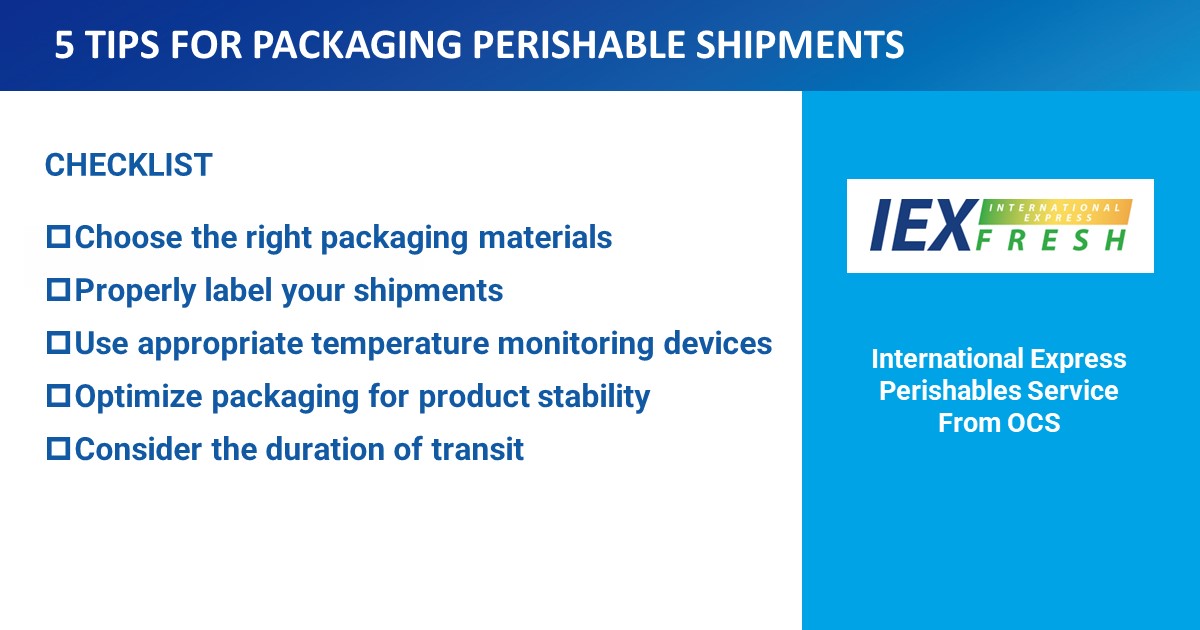
1. Choose the Right Packaging Materials:
Begin by selecting packaging materials that offer superior insulation and protection. Consider using insulated containers, thermal blankets, or dry ice to consistently maintain the desired temperature throughout the shipping process.
Commonly Used Perishable Packaging (source: IATA):
- Fiberboard Packaging
- Expanded Polystyrene (EPS) Packages
- Rigid Plastic Packaging
- Flexible Plastic Packaging
- Vacuum and Modified Atmosphere Packages
- Wooden Packaging
- Metal Cans and Canisters
2. Properly Label Your Shipments:
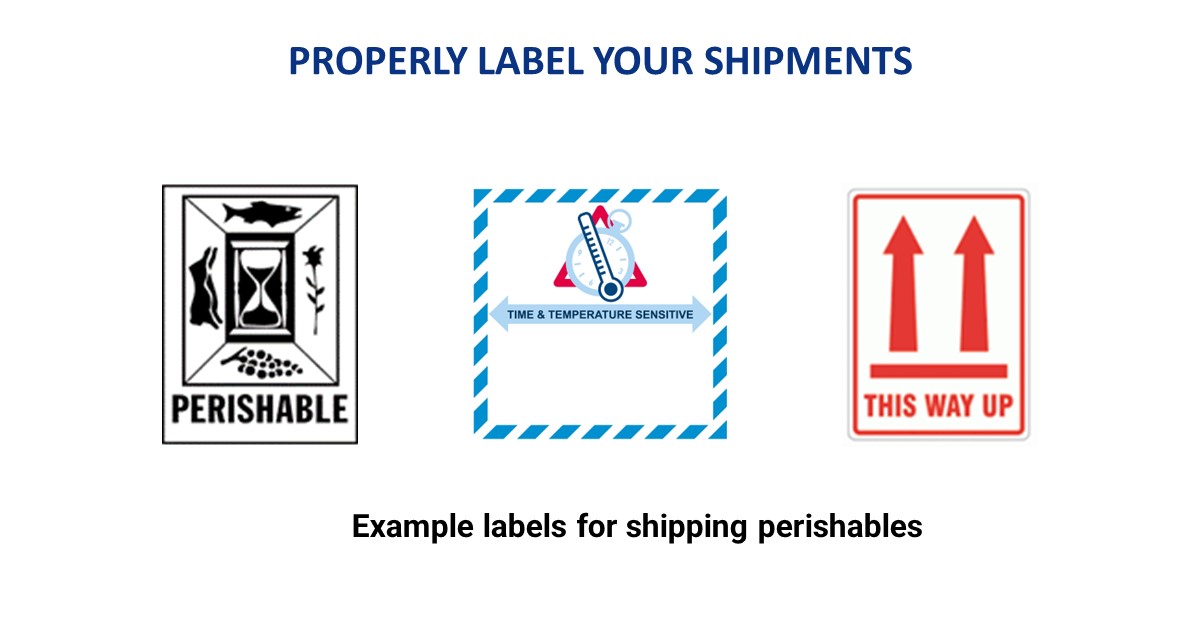
Clearly mark all packages as "Perishable" and include explicit handling instructions such as "Keep Refrigerated," "Do Not Freeze," or "This Way Up." This clear labeling helps carriers prioritize your shipments and handle them appropriately.
3. Utilize Appropriate Temperature Monitoring Devices: For larger or high-volume shipments, incorporate temperature monitoring devices like data loggers or time-temperature indicators within your packaging. These devices enable you to track temperature fluctuations during transit, helping identify any potential issues that could compromise the quality of your perishables.
4. Optimize Packaging for Product Stability: Prevent damage or spoilage by carefully arranging your perishables within the package. Use dividers or cushioning materials to minimize movement and maintain product stability throughout transit.
5. Consider the Duration of Transit: Always factor in the estimated transit time when packaging your perishable shipments. For longer journeys, consider employing advanced cooling systems or specialized insulated packaging solutions designed to maintain the desired temperature for extended periods.
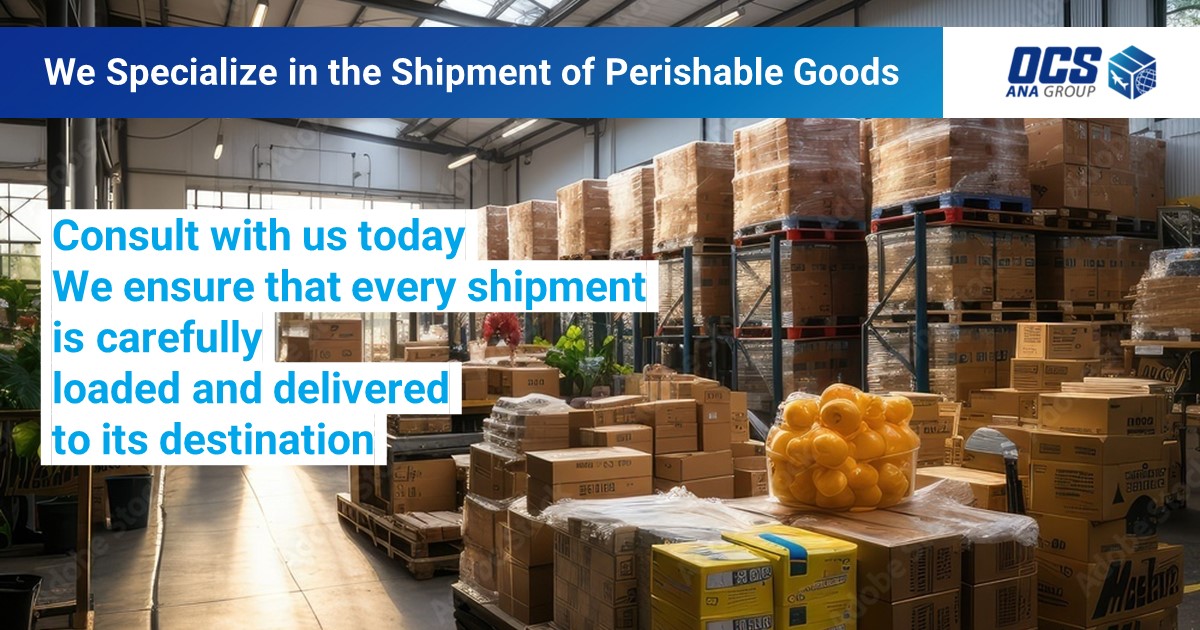
Shipping perishables internationally requires specialized packaging, precise temperature control, expedited logistics, and strict regulatory compliance. OCS excels in this, ensuring your goods are handled with utmost care, maintaining quality and safety throughout their journey, and complying with all international regulations.
At OCS, we are committed to customer satisfaction, operational efficiency, and overcoming the complexities of international perishable shipping. Trust us to deliver your perishables safely, swiftly, and in full compliance, transcending borders with confidence.
More Information
■ About IEX Customize: Read
■ OCS Global Network: Office locations
Official OCS Global Social Media






.jpg)
.jpg)
.jpg)


